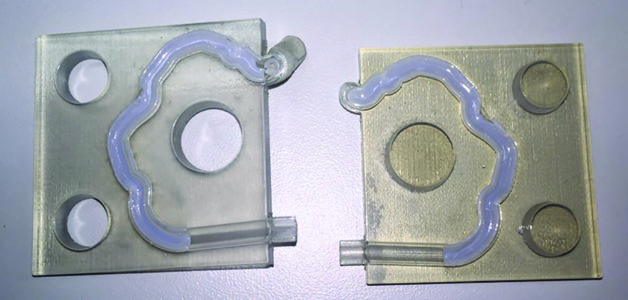The average heart pumps 100,000 times a day and rarely gets a break. When the heart breaks down, so does our body. That’s why it’s important as ever that we know the right methods and have the right tools to treat the heart when it fails. 3D printing helps develop medical devices to treat heart disease and allows companies, like Cardiovascular Systems, Inc. (CSI360), to continually innovate their designs.
Atherosclerosis, the accumulation of plaque on the interior lining of your arteries, is a common form of heart disease that CSI360 is developing solutions to conquer. Their orbital atherectomy system (OAS) safely reduces arterial calcium with sanding and centrifugal force, enabling safe and effective stent deployment. However, the OAS is very complicated with more than 30 actively moving part, which makes the prototyping long and expensive using traditional methods, in this case being CNC machining. This limited the iterations they could make because of their schedule and budget. It also caused them to abandon far-fetched ideas because of the cost it would take to prototype them.
On the lookout for alternative solutions, CSI360 made their switch to additive manufacturing using a 3D printing service bureau. After immediately seeing their costs and time decreasing, they decided to invest in their own 3D printers. The switch to in-house 3D printing from the service bureau was actually a greater cost/time reducer than the jump to the service bureau from the machine shop.
Since their move to in-house 3D printing, they have sped up their prototyping by 71% and cut their costs by 88%. On top of their design quality improving, they also started printing anatomical models for testing and training their mechanisms. This allows engineers to simulate how a device will perform in a particular case. 3D printing has completely changed how their medical devices are designed and will only continue to benefit physicians better treat their patients so their heart can maintain that “Lub, dub”, “Lub, dub”, “Lub, dub”.
Article from Stratasys Blog JUL 25, 2017 10:16 AM


